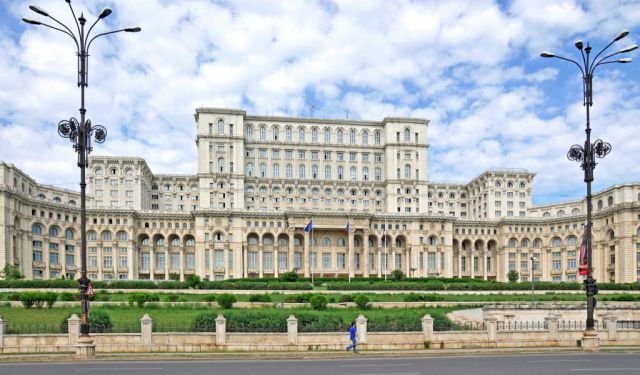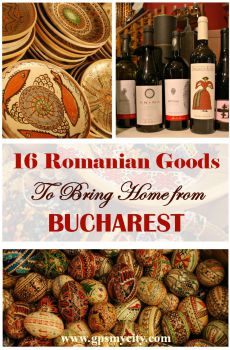Lipscani Street, Bucharest (must see)
Lipscani Street is the beating heart of Bucharest’s Old Town, a vibrant pedestrian artery that beautifully intertwines medieval charm with bustling modern life. Stretching for nearly a kilometre, Lipscani has been central to the city’s identity since its first mention in 1589, originally known as Broad Lane (Ulita Mare). Its name derives from “lipscan,” the Romanian word for merchants from Leipzig-“Lipsca”-who traded here, making it a lively hub where fine European goods arrived in Wallachia.
The street thrived especially during the reign of Princes Constantin Brancoveanu and Serban Cantacuzino in the late 17th and early 18th centuries, becoming home to guilds and several hanuri (merchant inns) such as The Linden Tree Inn (Hanul cu Tei), which still stands today with its original vaulted cellars and façade. Nearby, the impressive National Bank of Romania occupies the former Serban Voda Inn site, its grand eclectic façade a testament to the late 19th-century architectural ambitions. These buildings reveal layers of Baroque, Neo‑Classical, and Brancovenesc styles-an architectural narrative of a street that evolved from trade epicentre to cultural landmark.
Throughout the 20th century, Lipscani suffered neglect-from wartime damage to Communist-era dereliction-but escaped major demolition and began a dramatic revival in the early 2000s. Today, it pulses with life: cafés, atmospheric bars, boutique shops, and cultural gems occupy restored spaces. Highlights include the iconic Caru’ cu Bere (est. 1899), a Gothic‑Revival gem, and Carturesti Carusel, a stunning early-20th-century bookstore in a former Phanariot bank building. Close by, visiting the Old Princely Court ruins and Stavropoleos Church offers a dip into medieval Bucharest.
For visitors, Lipscani is an immersive time-travel journey. By day, historic façades and narrow cobbles beckon. By night, it transforms into the lifeblood of Bucharest’s culinary and nightlife scene. Whether you're exploring its rich architecture, dashing from a coffee house to a craft beer bar, or simply soaking in the spirited atmosphere, Lipscani is where the city’s past and present meet-and it’s a must-do introduction to the soul of Bucharest.
The street thrived especially during the reign of Princes Constantin Brancoveanu and Serban Cantacuzino in the late 17th and early 18th centuries, becoming home to guilds and several hanuri (merchant inns) such as The Linden Tree Inn (Hanul cu Tei), which still stands today with its original vaulted cellars and façade. Nearby, the impressive National Bank of Romania occupies the former Serban Voda Inn site, its grand eclectic façade a testament to the late 19th-century architectural ambitions. These buildings reveal layers of Baroque, Neo‑Classical, and Brancovenesc styles-an architectural narrative of a street that evolved from trade epicentre to cultural landmark.
Throughout the 20th century, Lipscani suffered neglect-from wartime damage to Communist-era dereliction-but escaped major demolition and began a dramatic revival in the early 2000s. Today, it pulses with life: cafés, atmospheric bars, boutique shops, and cultural gems occupy restored spaces. Highlights include the iconic Caru’ cu Bere (est. 1899), a Gothic‑Revival gem, and Carturesti Carusel, a stunning early-20th-century bookstore in a former Phanariot bank building. Close by, visiting the Old Princely Court ruins and Stavropoleos Church offers a dip into medieval Bucharest.
For visitors, Lipscani is an immersive time-travel journey. By day, historic façades and narrow cobbles beckon. By night, it transforms into the lifeblood of Bucharest’s culinary and nightlife scene. Whether you're exploring its rich architecture, dashing from a coffee house to a craft beer bar, or simply soaking in the spirited atmosphere, Lipscani is where the city’s past and present meet-and it’s a must-do introduction to the soul of Bucharest.
Want to visit this sight? Check out these Self-Guided Walking Tours in Bucharest. Alternatively, you can download the mobile app "GPSmyCity: Walks in 1K+ Cities" from Apple App Store or Google Play Store. The app turns your mobile device to a personal tour guide and it works offline, so no data plan is needed when traveling abroad.
Lipscani Street on Map
Sight Name: Lipscani Street
Sight Location: Bucharest, Romania (See walking tours in Bucharest)
Sight Type: Attraction/Landmark
Guide(s) Containing This Sight:
Sight Location: Bucharest, Romania (See walking tours in Bucharest)
Sight Type: Attraction/Landmark
Guide(s) Containing This Sight:
Walking Tours in Bucharest, Romania
Create Your Own Walk in Bucharest
Creating your own self-guided walk in Bucharest is easy and fun. Choose the city attractions that you want to see and a walk route map will be created just for you. You can even set your hotel as the start point of the walk.
Old Town Walking Tour
The Historical Center of Bucharest, or the Old Town, as the locals habitually refer to it, is one of the most beloved and attractive areas in the Romanian capital. The neighborhood is really beautiful a place to visit, and you can walk into it pretty much from anywhere in central Bucharest. Ion Constantin Brătianu Boulevard crosses the historic heart of the city from Piata Universitate... view more
Tour Duration: 2 Hour(s)
Travel Distance: 1.9 Km or 1.2 Miles
Tour Duration: 2 Hour(s)
Travel Distance: 1.9 Km or 1.2 Miles
Bucharest Introduction Walking Tour
Bucharest, the capital and cultural center of Romania, is one of the largest cities in Southeastern Europe.
The name București has an unverified origin. Tradition links it to the guy named Bucur, who (according to various legends) was either a prince, outlaw, fisherman, shepherd or a hunter. The Romanian word “bucurie” means joy (happiness), which in turn explains one of Bucharest's... view more
Tour Duration: 2 Hour(s)
Travel Distance: 3.7 Km or 2.3 Miles
The name București has an unverified origin. Tradition links it to the guy named Bucur, who (according to various legends) was either a prince, outlaw, fisherman, shepherd or a hunter. The Romanian word “bucurie” means joy (happiness), which in turn explains one of Bucharest's... view more
Tour Duration: 2 Hour(s)
Travel Distance: 3.7 Km or 2.3 Miles
Useful Travel Guides for Planning Your Trip
16 Uniquely Romanian Things To Buy in Bucharest
Nicknamed "Little Paris", today's Bucharest is the capital of a vibrant European nation, known as Romania, with lots of history and great cultural heritage - spanning from centuries-old rural traditions to New Wave cinema. Keen on rustic stuff, Romanians carefully preserve their...






